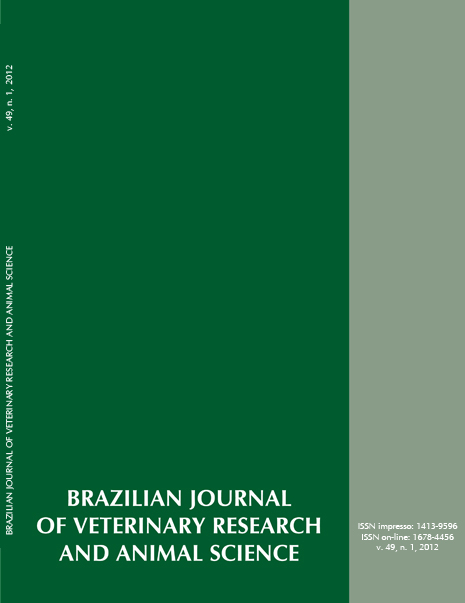Seasonal differences in endocrine and ovarian patterns of Bos taurus indicus (Nelore) heifers estrous cycles
DOI:
https://doi.org/10.11606/issn.2318-3659.v49i1p46-56Keywords:
Seasonal, Estradiol, Luteinizing hormone, Ovarian follicle, ProgesteroneAbstract
Estrous cycle of eight Nelore heifers were evaluated during different seasons of the year (autumn n=11; winter n=8; spring n=9 and summer n=9) with daily count and measurement of follicles ≥3mm, blood was collected every 12h for LH and progesterone (P4), and after estrous every 3h for LH peak. Five ovariectomized heifers were injected with 17β-estradiol (2μg/kg) every season and blood samples collected every 3h (for 30h) thereafter for LH quantification. The monthly percent body weight difference (Δ%) did not vary among seasons. P4 concentration was higher (p<0.01) and follicle number lower during autumn and summer compared to winter and spring. During winter there were more estrous cycles with three and during summer only cycles with two follicular waves (p<0.01). As LH secretion did not vary despite P4 concentration and as there was negative correlation between higher P4 values and daily percentile variation of photoperiod (Δ%, p<0.01; r= -0.45) it is possible to suppose that there is seasonal variation on luteal cell sensitivity to LH. In the ovariectomized Nelore heifers, the LH basal concentration (without estradiol stimulus, p=0.02) and the LH response to estradiol (p<0.01) were lower during summer, leading to the hypothesis that there is seasonal variation of hypothalamic sensitivity to estradiol. According to the present experiment there are suggestions of seasonal reproduction in Nelore heifers.
Downloads
Downloads
Published
Issue
Section
License
The journal content is authorized under the Creative Commons BY-NC-SA license (summary of the license: https://





